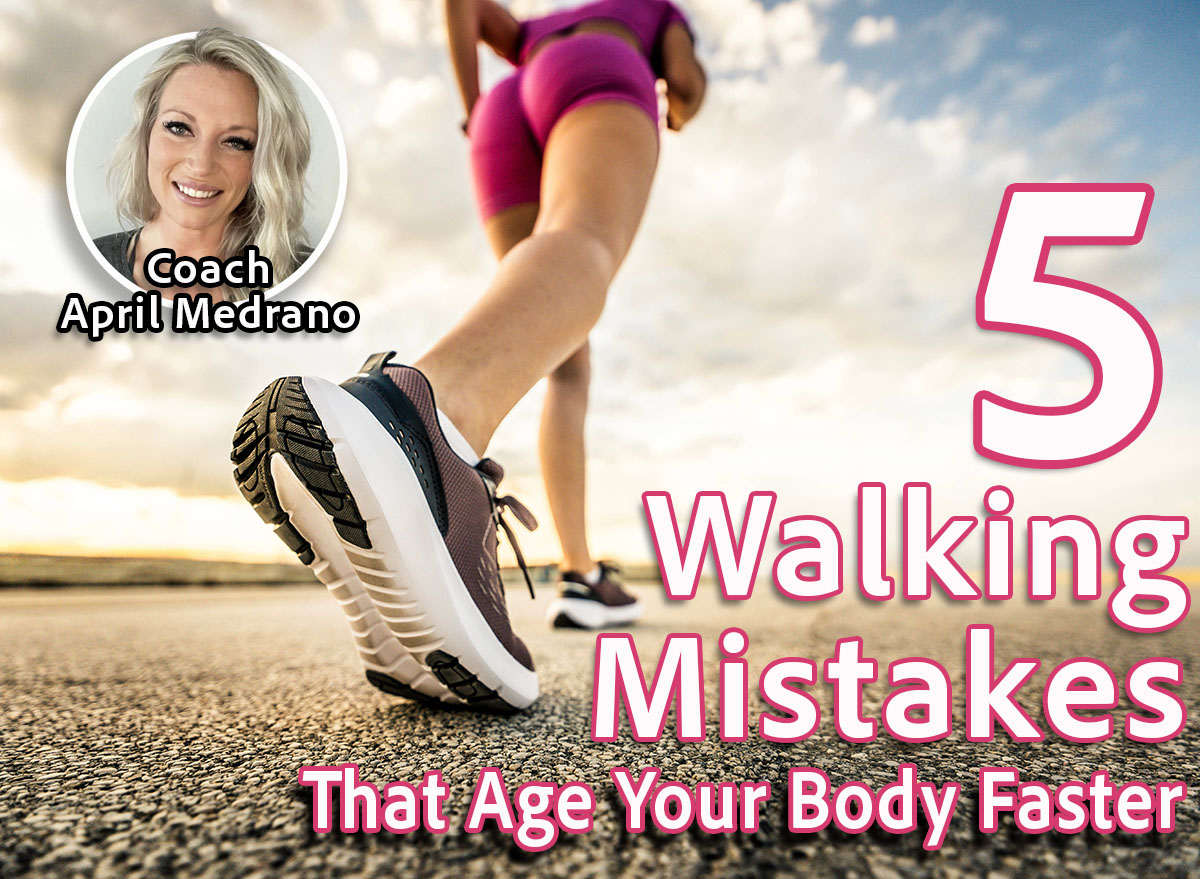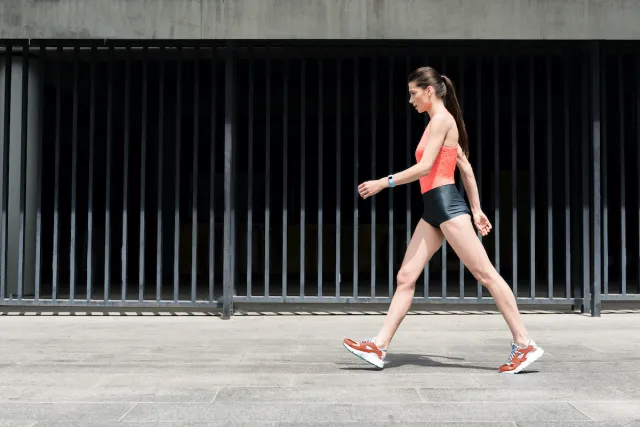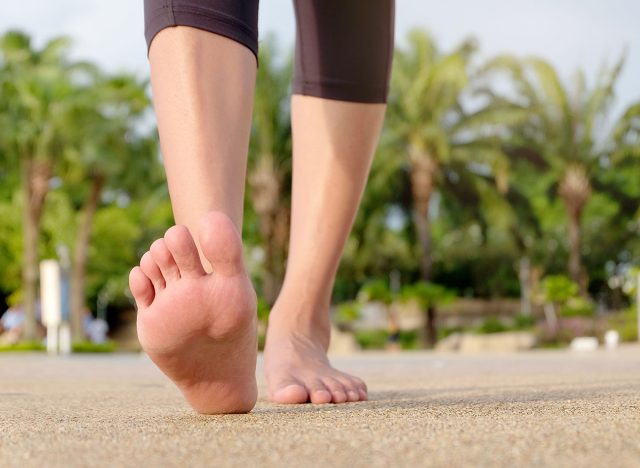5 Walking Mistakes That Quietly Age Your Body Faster

There’s something undeniably refreshing about lacing up your shoes and heading out for a good old-fashioned walk. Getting in your steps and breathing in some fresh air truly can work wonders for both your mind and body. But here’s a caveat: Certain walking habits can quietly age your body without your knowledge. That’s why we spoke with a fitness expert who shares some key mistakes to avoid on your next walk.
“Poor walking mechanics can absolutely impact strength, balance, and increase injury risk,” explains April Medrano, master coach at STRIDE Fitness. When posture is off or your gait is uneven, it creates compensations that weaken key muscles like the glutes and core. Over time, this can lead to joint pain, reduced power in workouts, and a higher chance of injury. Imbalances from walking poorly can also throw off your body’s alignment, making it harder to stay stable or build strength effectively.”
Seeing as walking is one of the most consistent movement patterns we engage in, improving it is essential for injury prevention, performance, and longevity.
Now, let’s dive into the five walking habits that are quietly aging your body.
Slouching

Whether you’re sitting at your desk or simply going about your day, slouching is a major no-no. Yet it’s one of the most common walking habits April cautions against.
“Slouching (bad posture) [means] walking with your head forward and shoulders rounded,” she tells us. “This compresses the spine, strains your neck, and creates that hunched appearance associated with aging.”
Focus on walking with a tall posture where your head is stacked over your shoulders. In addition, perform exercises like band pull-aparts and wall angels that strengthen the upper back.
Taking Short, Shuffling Steps

Even when you’re tired, don’t shuffle through your walks. This decreases ankle and hip mobility over time and can cause instability and stiffness.
“You can counter this by including mobility drills like leg swings, lunges, and uphill walking to retrain a longer, more natural stride,” April explains.
Walking With Rigid Arms

If you’re walking with rigid arms, it’s time to add some swing to your step. After all, April tells us, “Arm swing isn’t just for show.” It’s essential for stability and rhythm.
“Walking with rigid arms or no arm swing is a common pattern that robs you of natural momentum and throws off your balance,” April says. “Your arms should swing naturally front to back (not across the body), and strength training the upper body can help restore this fluid movement.”
Favoring Flat Surfaces

It’s easy to get into the habit of choosing the same-old “flat, predictable” walking routes. While walking on the treadmill or sidewalk may be convenient, they don’t challenge your body. So it’s time to switch up your routine.
“Adding in trails, grass, or sand—along with agility drills like walking lunges or lateral steps—can build resilience,” April shares.
Wearing Improper Footwear

Your walking shoes should provide support and durability to ensure a safe and effective cardio session.”Wearing incorrect footwear—whether too worn out or overly cushioned—can lead to poor gait mechanics and weakened foot muscles,” April cautions. “Investing in well-fitting, supportive shoes and spending time barefoot on stable surfaces can strengthen your feet and positively affect your entire body alignment.”